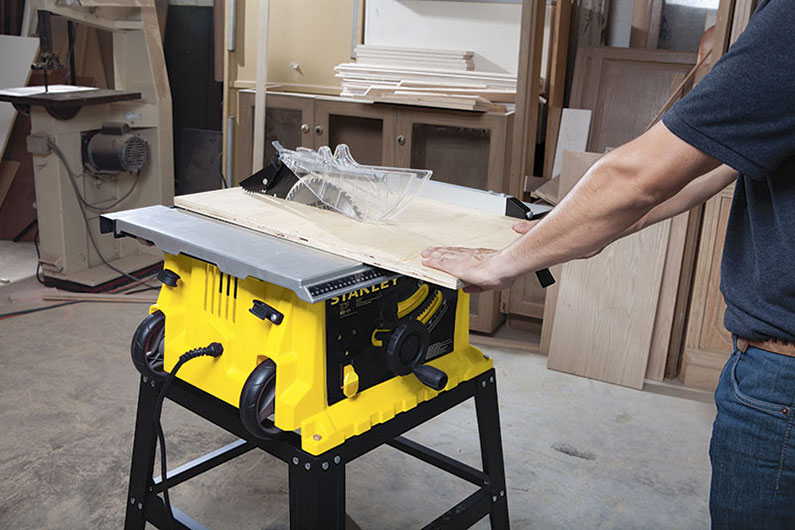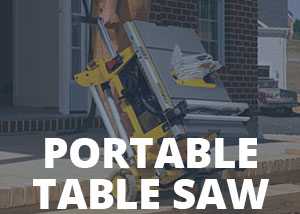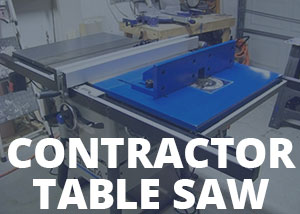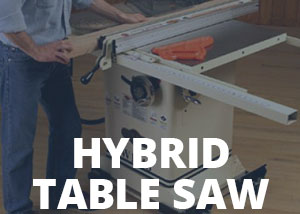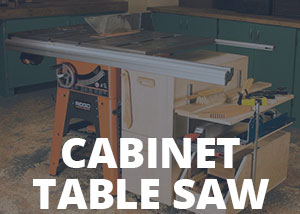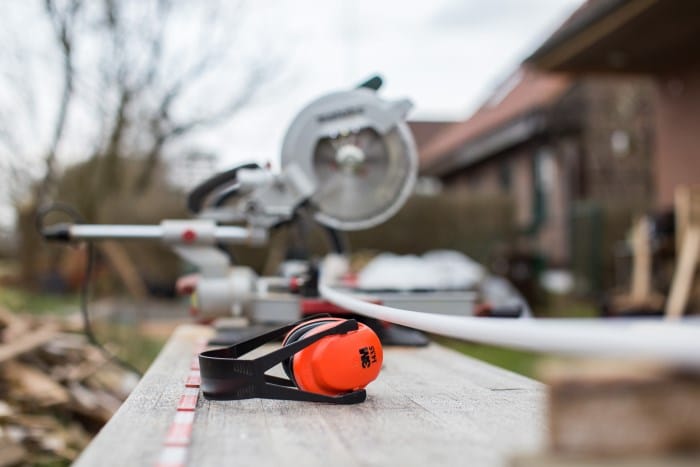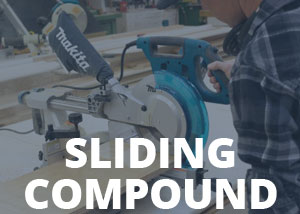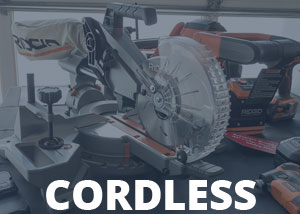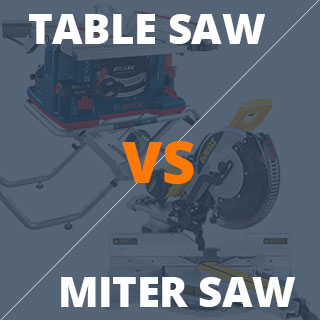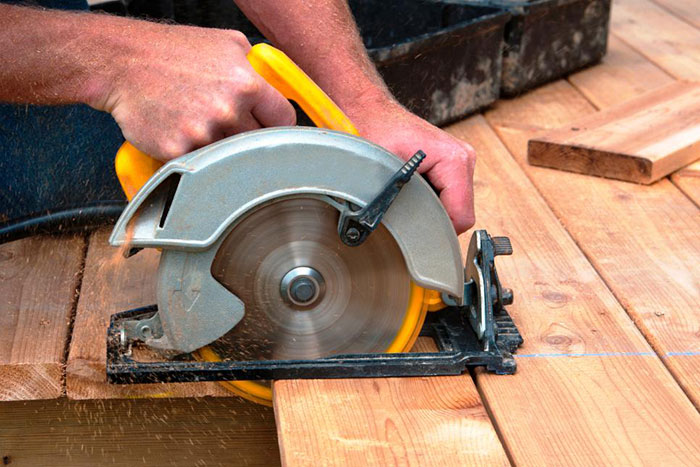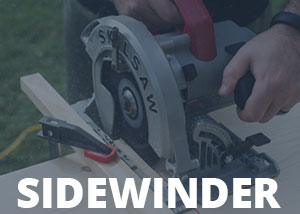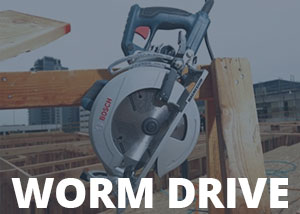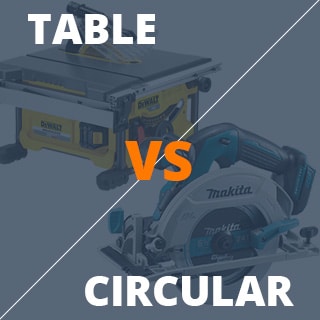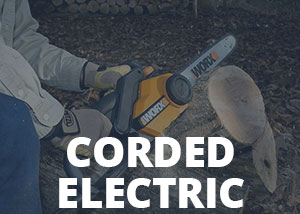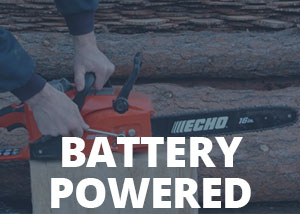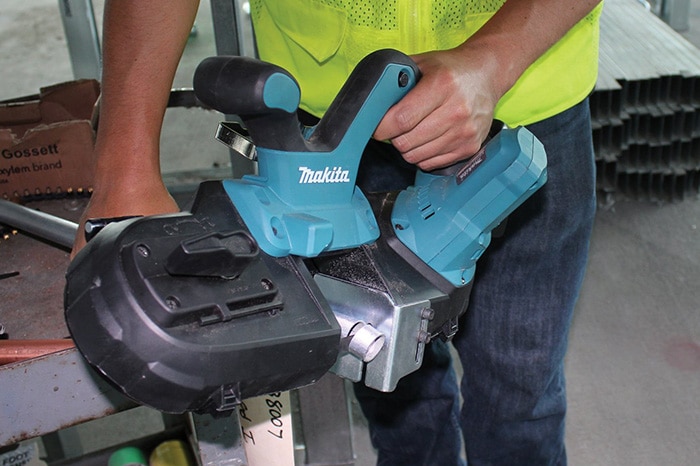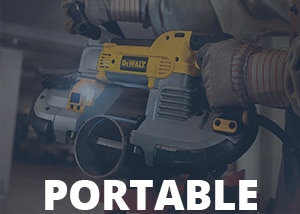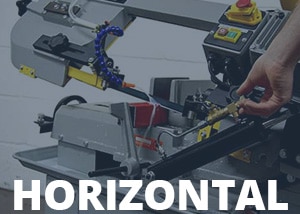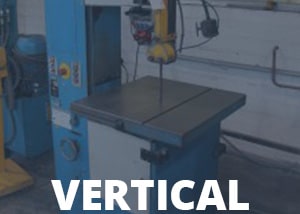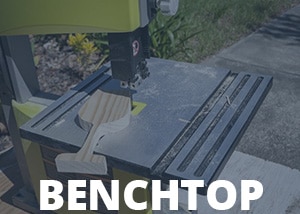Best Saws in 2024 – Buyer’s Guide, Reviews and Comparison
Different Types of Saws
Cutting wood with high precision is pretty important if you’re a devoted DIY-er, and especially if you’re a professional. You cannot commence a serious project without having the right tools for it. In order to cut wood quickly and with high precision, you need a high-quality table saw.
Many people don’t take it seriously, but purchasing a new heavy-duty tool shouldn’t be a trivial thing for you. There is plenty of stuff you need to think about before opting to buy a particular model. Also, there are hundreds of available models on the market, but only a few of those are worth checking out.
Every good unit should feature the three most important elements – affordability, precision, and high level of safety. Affordability is a pretty self-explanatory element. However, that doesn’t mean you should look for cheap units. Instead, look for the ones that offer the same amount of features as other more expensive ones do.
Precision is something that can make or break a particular model. It doesn’t matter how innovative, modern, or expensive a table saw is, if it isn’t accurate – it’s not worth the hassle. DIY projects don’t depend just on your sheer experience, the tools you’re using have to fulfill certain requirements and parameters.
When talking about safety, one of the things you should remember is not to spare money on it. Regardless of how big your budget is, you should always be willing to sacrifice some finances for better safety features. It’s always better to be safe than sorry.
These tools are highly useful if one knows how to use them properly. They save a lot of time, money, and hassle. If you’re a hobbyist in need for a new heavy-duty tool, a high-end table saw is the best solution.
If you’re looking to make precise angled cuts, a miter saw is a must-have tool. When it comes to power tools, all of them have a specific purpose, and miter saws are the best solution for crown molding, cutting frames, and handling any project that requires accurate angles. There are plenty of types to choose from such as basic, sliding, cordless, and compound miter saws.
Standard miter saws are used for straight cross cuts, usually the 45 degrees ones. Unlike a chopping saw that cuts only at a 90 degrees angle, these offer a variety of different angles. You can usually fine-tune the unit without any tools by using the positive bevel stops that are already defined by the manufacturer. This type is mainly used for projects like framing pictures, or anything that doesn’t require a peculiar angle.
The compound units are similar to the standard ones, but with a few notable differences. The most obvious one is the ability to rotate the blade at a vast range of angles. This ability adds to the complexity of these machines meaning they are slightly harder to master than the standard ones. However, these units are able to cope with much more complex projects due to their versatility.
Sliding units let you move the saw head back and forth thus increasing the overall size of the work surface. It means that you have much more control over a wooden piece because you can push and pull the head arbitrarily.
The most important things to look for in these machines are accuracy, ease of use, and cost-efficiency. If you manage to find a model with these three elements, that should be the one to go with. If you don’t know which one to choose, take a moment and check our reviews out, we’ve covered quite a lot of useful and investment-worthy models.
A vast majority of DIY enthusiasts, as well as professionals, love having a circular saw by their side. It’s a helpful power tool that is designed to eliminate extensive labor and significantly cut downtime. On top of that, it is a relatively affordable tool meaning anyone can own one and get rid of fatigue and other unpleasant side-effects of manual saws.
These units operate on a pretty simple principle. They use toothed disks that are driven by a powerful motor located inside the casing. Modern circular saws feature a 15-amp motor which is able to deliver up to 5000 RPM. As you can tell, it has more than enough power to cut through anything as long as you’re using a proper blade. The handheld type is usually the most conventional one that people use. Apart from handheld, there are also miter saws that are capable of cutting different angles, and table saws that are designed for large pieces of wood and demanding projects.
The main advantage of these machines is their ease of use. Anyone can learn how to use a circular saw thanks to its simple working principles. However, one must take great care about their safety because these things can be fatal if not handled properly. Therefore, it’s usually recommended that you read the user manual before turning the unit on. It’s a good way of making sure everything is as it should be.
Before you decide to invest in one of these machines, there are some things you should think about. The first rule is that the price doesn’t indicate quality. In other words, if something is expensive it doesn’t mean it’s worth investing in. The key is in finding the one that suits your needs and meets your expectations.
Chainsaws are great power tools to have for many reasons. The biggest advantages of these machines are their power, versatility, and efficiency. If you’re looking to purchase one for yourself, there are a few categories you can choose from, depending on your expectations and requirements.
The most popular type among homeowners is corded chainsaws. They are great for people who aren’t as experienced and don’t want to hassle too much with regular maintenance. On the other hand, there are some downsides such as lack of power and portability. In simpler words, if you’re planning on cutting trees in the woods, corded saws might not be the best idea due to certain limitations (e.g. lack of power source).
If you’re looking for high power output and torque, we recommend getting a gas-powered unit. While they do require more maintenance and attention in comparison to electric ones, they also offer better performance and portability. As far as the user’s previous experience goes, you’ll need some basic knowledge, but it’s not as complicated and hard as one might expect.
Battery-powered units should be used for light tasks such as pruning, trimming, and cleanups. As the name suggests, they use batteries as a power source. They do have quite a bit of limitation but are also the simplest and easiest ones to use. The biggest advantage of these machines is their ease of use whereas the most significant drawbacks are battery-related issues such as long recharging cycles, limited cutting power, and etcetera.
Pole saws are usually miniature versions of everything we mentioned above. They have a specific purpose which makes their use quite limited. In other words, most people use pole saws to cut branches or shape their living fence. Most models can be detached and used as a mini version of regular chainsaws.
Manual models are best for hikers, survivalists, and even hunters. They are the cheapest type but are also the most limited one. While manual chainsaws aren’t power tools per se, everyone should own at least one for emergency cases and various occasions.
If you’re looking for high precision and consistency in a tool that’s capable of coping with a wide array of applications, a high-quality bandsaw might be an optimal solution. These saws are well-known for their accuracy, and more importantly – their ability to cut peculiar and irregular shapes.
Most bandsaws work on the same principle of driving a continuous band of serrated metal that is mounted on two (or more) wheels. The quality of these driving wheels is of utmost importance because they are one of the most essential components. For example, aluminum wheels tend to struggle with stability while the ones made of iron have more balance but are significantly heavier.
When it comes to materials it’s able to cut, it all comes down to the type of blade you’re using. A quality bandsaw can cut through wood, metal, and even meat. Also, depending on the distance between the worktable and the upper mechanism, some saws can cut large pieces of lumber without breaking a sweat.
Most models that are available on the market are suitable both for professionals and DIYers, even though the enthusiasts tend to skip on investing in these as most units come at a hefty price.
Bandsaws are definitely not the easiest tool to master. In fact, it’s strongly recommended that you get familiar with the concepts of these machines before using one. The first reason behind this is safety, while the other reason is the fact that you won’t be able to get satisfactory results if you aren’t experienced.
These tools usually yield great results, but only in the right hands. The only thing that’s averting people from investing is the price. These things are not cheap and as such require a thorough analysis. In other words, make sure you know what you’re investing in before spending a couple of hundred dollars.
Saws FAQ
1. Can Saws Be Sharpened?
Basically speaking, yes — all saws that don’t have specially-hardened teeth can be sharpened. The ones that do have such teeth can be sharpened too, but not in the ordinary sense of the word. The reason behind this is the fact that hardened teeth have the same hardness of the saw files, which means that using saw files on them produces no results. This is where diamond files come into play.
However, the process of sharpening a saw depends on the specific type of device. Hand saws, chainsaws, and cordless saws with circular blades, all require a different approach. For example, sharpening a hand saw is something that the owner can do on his own, while sharpening a blade with carbide teeth should be done by an experienced professional. No matter the type, keeping the saw sharp is essential — it will retain its usefulness and be much safer to work with.
2. What Are Saws Used For?
Whether we’re talking about saws with blades, wires, or chains with toothed edges, the primary purpose of these devices is to cut through materials — usually wood, but sometimes metal or stone.
With these devices, the cut is performed by placing its toothed edge on the material in question and moving it back and forward. The force can be applied in numerous ways — by hand, water, steam, electricity, or any other power source. Abrasive saws come with circular saws that bite through metal or ceramic.
Today’s market offers a wide variety of different kinds of powered saws — table, rotary, reciprocating, miter, band, chop, flooring, and many other different types. Each of them has a specific purpose and performs cuts that others often can’t.
3. What Saw Can Cut Metal?
The type of saw that’s used to cut metal depends on a couple of different factors, such as the desired characteristics of the cut, the size of the material, and the composition of the metal. The tool and its blade used to cut aluminum can’t be used to perform cuts on steel alloy, for example. Here are the types of saws most commonly used to cut metal:
• Hack Saw
This is one of the most frequently-used tools when it comes to cutting metal. A hacksaw has a C-shaped frame attached to a handle and a thin, flexible blade located on the open portion of the frame. This blade can have teeth of various sizes. Blades with smaller teeth perform finer cuts and are usually used on thin aluminum or copper sheets. The ones with bigger, widely spaced teeth, on the other hand, may be able to cut through steel and iron.
• Handheld Circular Saw
These are capable of performing straight cuts through almost all types of metal. When using a handheld circular model, you need to choose the correct blade for this project. Generally, these devices accept abrasive discs — they are not toothed like the woodworking blades, but have their edges lined with mineral grit (like carbide).
• Metal Chop Saw
Just like the miter saw, this type of device has a blade that lowers through the material that is placed on a stationary base. It’s designed in a way to easily withstand the heat and flying debris that appears when working on large metal stocks.
• Grinder
Unlike the portable circular saw, whose blade is sitting perpendicular to the unit’s engine, the blade of the grinder is located on a plane that’s parallel to its engine. This kind of an arrangement allows the user to cut through metal by using sweeping motions and applying some pressing force. It uses abrasive, circular discs.
4. How Are Saws Measured?
When talking about saw measurements, people usually think of chainsaws — replacing the bar, and the chain requires measuring. Having a bar that doesn’t fit won’t do your chainsaw any good, and the unit certainly won’t run with an oversized chain.
To determine the “called length” of the bar, you should measure the distance from the furthest cutting tip to the front of the unit. Once you’ve done that, just round up to the nearest inch and you’ll get the called length.
To find out the pitch (chain size), you need to determine the length between three consecutive rivets and then divide the result by two. Determining the chain gauge, on the other hand, is easily done by using the following trick:
Take a penny, a dime, and a quarter. Use a screwdriver to clean out the sap out of the bar and slide the coins into the bar groove. Determine which one of the coins fits into the groove without having to be forced in it. Use the following info to find out the gauge:
Dime — .050 Gauge
Penny — .058 Gauge
Quarter — .063 Gauge
If you’re lucky, your chainsaw might have the information you need already stamped into its casing — this is usually located close to the bar mounts. With this information, you should be able to get the correct replacement chain for your model.
5. When to use saws?
These devices can be used whenever your project requires you to do some cutting. However, each type of them is used for a specific purpose:
- Back Saw – for consistently fine and straight cuts.
- Bow Saw – for trimming trees, cutting logs, and pruning.
- Hacksaw – for cutting tubing, pipes, and plastic. It can also be used for wood and metal.
- Veneer Saw – explicitly used for veneer work.
- Japanese Saw – for cutting in hard-to-reach and tight spaces.
- Coping Saw – for scrolling, trim work, and all cutting tasks that require utmost precision.
- Keyhole Saw – for cutting patterns or rough cut circles.
- Crosscut Saw – for cutting and trimming branches and logs.
- Rip Cut Saw – a must-have tool for framing.
- Chainsaw – for outdoors tree work.
- Band Saw – ideal for tubes, PVC, piping, as well as for intricate cutting of curves into the wood.
- Flooring Saw – for cutting floorings, such as hardwood, laminate, or bamboo.
- Table Saw – for making a large number of rip cuts and preparing identical-sized pieces.
- Chop Saw – can be used for metal or masonry, depending on the manufactured version.
- Jigsaw – for creating curves and similar non-regular lines.
- Radial Arm Saw – for making identical compound cuts.
- Rotary Saw – essential for smaller cutting tasks concerning paneling and drywall.
- Miter Saw – excellent for trim jobs and tasks that involve angle cuts and precise measurements.
- Reciprocating Saw – used for cutting wood and tubing, it is also very convenient when it comes to cutting beneath wood joints and walls.
- Scroll Saw – for intricate scrollwork and creating curves with edges, radial lines, and various patterns.
- Wallboard Saw – makes starter holes for power tools. It’s also used for puncturing through drywall or paneling.
- Circular Saw – these accept blades that are capable of cutting through most types of wood, masonry, plastic, metal, and other materials.
6. How Do Saws Work?
The Circular saw is one of the most commonly used tools in today’s world and used extensively by both DIY enthusiasts and professionals. It’s a power tool that utilizes a round-shaped metal blade that’s lined with sharp teeth, to cut a wide variety of materials — wood, cement block, metals, slate, plastics, fiberglass, and brick.
The blade, which is situated inside the circular saw, spins mechanically and provides the user with a clean cut. It can be mounted to a table or used inside corded/cordless handheld equipment. Nowadays, various blades are used in order to cut all kinds of materials in the most effective way possible.
Using a circular saw is one of the quickest and most effective ways to cut a piece of work. You only have to adjust the correct depth and height, line it up to the desired place of cutting and then cut by pushing the blade down onto the material. It is precisely this ease of use that made these tools so popular — millions of people across the world use them for numerous applications.
Reciprocating saws, on the other hand, are a little bit different — they’re more like drills, as they don’t use circular blades but ones that resemble those found on hand saws. Their blades cut through the material by utilizing a back and forward motion.
7. How To Sharpen Saw Blades?
Every circular saw is only as good as the blade located on it. Over time, these blades become blunt and unusable, leaving the owner with two options: purchase a new blade or do some sharpening. Fortunately, sharpening the blade on your own isn’t as hard as it might sound — here’s how to do it:
- The first thing you’ll have to do is to remove the blade from your device. Some models will require you to use a wrench, but most of them come with a spindle lock system that makes this process much faster and easier.
- Now it’s time to secure the blade. Do this by placing it into a vice grip, and do it in a way to have the teeth facing you and the blade facing upwards. Try to avoid excessive tightening, as it might damage the metal.
- Make a mark at the blade’s top-most point, so you will know when you’ve gone all the way around it. At this point, you’ll notice that every two blade points come with bevels that are on the side that is facing you. Take a diamond file and give the bevel of the first tip a couple of strokes.
- With the bevels appearing on every second blade, you’ll be able to skip those located in between. Repeat the process until you get your mark and then turn the blade over and do it all over again.
- Once you’re finished, carefully remove the blade from your vice grip and put it back onto your device. That’s it!
8. How To Clean Saw Blades?
Just like all other items that are used often, circular saw blades also get dirty. A blade that’s dirty doesn’t only affect the overall performance of your machine, but can also be dangerous to use. Take a look at the following tips and learn how to quickly and easily clean your blades:
- Remove the blade from your device and put it in an aluminum pan filled with water. Add a cup of laundry detergent, and then stir it, before submerging the blade in the liquid. Wait for about 10 minutes for it to start working.
- After taking it out of the pan, remove any remaining dirt by scrubbing it with a soft wire brush. Once you’re finished, dry the blade thoroughly. Next, place it back onto your device and enjoy smoother and cleaner cutting.
9. How To Change a Saw Blade?
Once the blade of your machine becomes dull, you’ll need to have it replaced or sharpened. Whichever you decide to do, removing it from the device is unavoidable. How do you do this?
The instruction manual for your circular saw is undoubtedly your best source of information — the way in which the blade is removed and replaced differs from one brand and model to another.
Some models come with blade release switches, turning the whole process of blade swapping into a quick and hassle-free job. Older models, on the other hand, require the user to unscrew the bolts and, in that way, loosen the blade.
Either way, we advise taking the opportunity to remove any accumulated dust, clean the guards, and clean the blade itself if you’re not replacing it with a new one.
10. How to Store Saw Blades?
Once the blade of your machine becomes dull, you’ll need to have it replaced or sharpened. Whichever you decide to do, removing it from the device is unavoidable. How do you do this?
The instruction manual for your circular saw is undoubtedly your best source of information — the way in which the blade is removed and replaced differs from one brand and model to another.
Some models come with blade release switches, turning the whole process of blade swapping into a quick and hassle-free job. Older models, on the other hand, require the user to unscrew the bolts and, in that way, loosen the blade.
Either way, we advise taking the opportunity to remove any accumulated dust, clean the guards, and clean the blade itself if you’re not replacing it with a new one.






